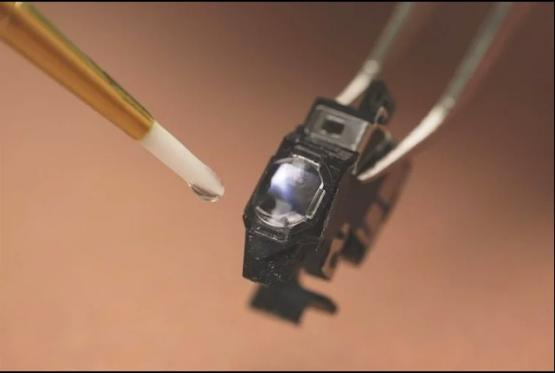What is the main reason for using LED curing adhesives over UV curable adhesives?
LED curing adhesives typically cure in 30-45 seconds under a light source of 405 nanometer (nm)wavelength. Traditional light cure adhesives, by contrast, cure under ultraviolet (UV) light sources with wavelengths between 320 and 380 nm. For design engineers, the ability to fully cure adhesives under visible light opens up a range of bonding, encapsulation and sealing applications that were previously not suitable for light cure products, since in many applications the substrates might not transmit in the UV wavelength but allow visible light transmission
What are some of the factors that may affect cure time?
Typically, the light intensity of the LED lamp should be between 1 and 4 watts/cm2. Another consideration is the distance from the lamp to the adhesive layer, for example, the further away the lamp from the adhesive, the longer the cure time. Other factors to take into account are the thickness of the adhesive layer, a thinner layer will cure more quickly than a thicker layer, and how transparent the substrates are. The processes must be tweaked to optimize the cure times, based not only on the geometries of each design, but also the type of equipment used.
How do you ensure that the LED adhesive has cured fully?
When an LED adhesive is fully cured, it forms a hard and non-tacky surface that is glassy smooth. The issue with prior efforts to cure at longer wavelengths is a condition called oxygen inhibition. Oxygen inhibition occurs when atmospheric oxygen curbs the free-radical polymerization process that cures almost all UV adhesives. It results in a tacky, partially cured surface.
Oxygen inhibition is most pronounced in applications that lack a barrier to atmospheric oxygen. For example, oxygen inhibition would tend to be worse in a conformal coating application with an open-air cure than it would be in an application that put the adhesive between layers of glass.
What are some of the safety benefits of LED curing adhesives vs. UV curing?
UV lights may pose a safety issue as they have the potential to cause skin burns and eye injuries; although LED lamps still need to be used with proper personal protective equipment, they tend not to pose the same level of risk that their UV curing counterparts do.
What specialty systems do Master Bond offer that cure with an LED light?
Master Bond LED 400 series offers a range of desirable engineering properties and depending on the grade, can be used for bonding, encapsulation, and coating. The newest product in the series is LED405Med.
Post time: May-15-2024






